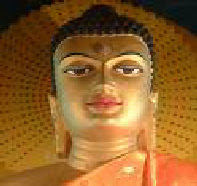As is the case with the civilizations of the ancient world, religion must have played an important role in the lives of Harappan people. However, nothing can be said with certainty about the religious life of the people of Indus valley civilization since our information on the topic is fragmentary.
The Harappan religion was polytheistic.
On the basis of information gathered from Harappan seals, seal impressions, terracotta and metal figures, cemeteries, etc, we can come to the conclusion that worship of the Mother Goddesses was very much prevalent in the society. It is very much to the point to underline the fact that worship of Mother Goddesses came into vogue in Hinduism one thousand years after the decline of Harappan culture. Other traits of later Hinduism such as worship of Pashupati Shiva, sacred animals trees etc, were practised by the Harappan people.
Among the male gods, the most striking is a three faced horned deity seated cross legged on a throne and surrounded by four wild animals, an elephant, a tiger, a rhinoceros and a buffalo, with two deer under the seat. The god has been described by British archaeologist Sir John Marshal as “Proto-Shiva”.
Animals played a big part in the religion of the people of Indus valley civilization. Though all the animals represented on the seals and sealings or in terracotta, faience and stones may not be sacred. The most common animal found on the Harappan seals is the bull, usually depicted with a single horn and often been referred to as ‘a unicorn’. As we know in Hinduism the bull is specially connected with the god Shiva, but the bull of Harappa is not associated with the “Proto-Shiva” as discussed earlier. The cow, so revered in later Hinduism, is nowhere depicted on the Harappan seals.
The worship of tree, fire and water was prevalent in the Harappan culture. The prevalence of tree worship is evidenced by the representation of on many seals and sealings found in the various archeological sites belong to Harappan civilization. The most striking of these depicts the trishula horned deity standing nude, with long hair, between two branches of a tree with half kneeling figure of a worshipper with long hair armlets and horns, behind whom is a human headed goat. The leaves of the tree appear like those of pipal, much revered by the Buddhists.
The worship of Phallic (lingam), the symbol of Shiva, was in vogue in Harappan times. Similarly, on the basis of certain large ring shaped stones, Marshall suggested them as representations of the female generative organ (yoni). However Marhsall’s view has been contested by George F Dales who opines, “There is no archeological evidence to support claims of special sexually-oriented aspects of Harappan religion.”
That Harappan people envisioned afterlife can be ascertained from their grave offerings which included grains, ornaments, pottery and other materials of daily use.
Bibliography
A. L. Bhasham : The Wonder that was India



